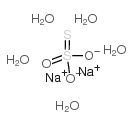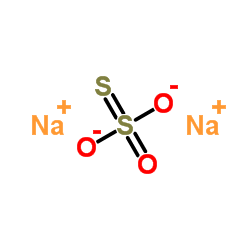| Structure | Name/CAS No. | Articles |
|---|---|---|
 |
sodium thiosulfate pentahydrate
CAS:10102-17-7 |
|
 |
Sodium thiosulfate
CAS:7772-98-7 |